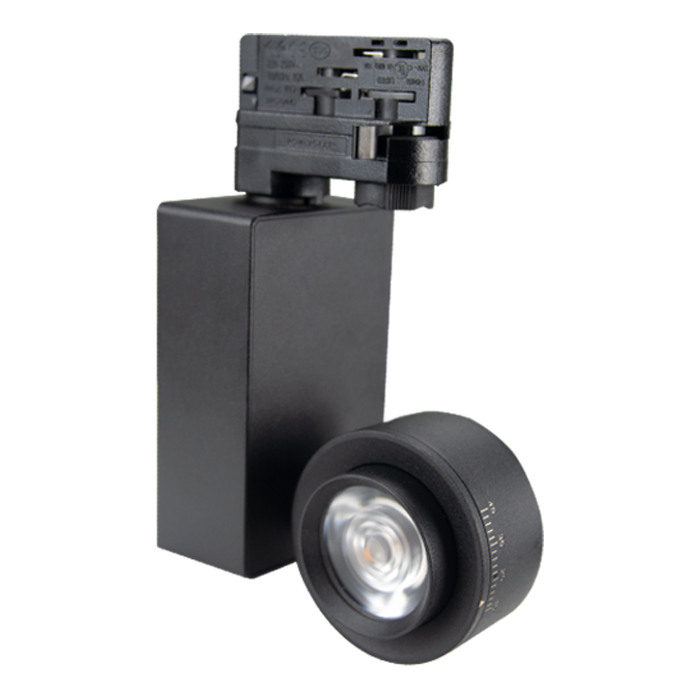Maximizing the Lifespan of LED Commercial Lighting Fixtures
LED lighting has emerged as the industry standard for commercial environments in recent years because of its energy efficiency, durability, and adaptability. LED lighting is renowned for its long lifespan, and it may go up to tens of thousands of hours before needing to be replaced.
In this article, we will introduce some factors that affect the service life of LED commercial lighting fixtures. Understanding these factors is critical to maximizing its lifespan and getting the most out of your investment.
Understanding LED Technology
You must first comprehend what LED technology is. LED technology is essentially distinct from more conventional lighting technologies like fluorescent or incandescent lights.
Unlike other lighting technologies, LEDs produce light with very little heat through the flow of electrons in semiconductor materials. The reason LEDs last so long and use so little energy is because of their effective light generation.
Factors Affecting LED Lifespan
Although LEDs are known for their long lifespan, several factors can affect their longevity. Below we will introduce in detail:
First of all, one of the primary elements influencing the lifespan of LED lights is heat. When LED lights are operating, they will produce some heat. The effectiveness and lifespan of the LED will be impacted if the heat cannot be dispersed. Additionally, excessive heat might damage the fixture's components and cause an early failure.
Second, the lifespan of LED lights is also influenced by the quality of the components utilized in them. Typical components of LED lights include drive circuits, heat dissipation structures, and LED chips. The functionality and lifespan of the entire light will depend on the quality of each component.
Third, the lifetime of LED lights is also influenced by the environment in which they operate. Conditions like temperature, humidity, dust, and moisture will have an impact on how long LED lights last.
Lastly, because LED lights are susceptible to voltage variations, internal components (such as LED chips and driving circuits) may be stressed to the point of premature failure. For LED lights to function, a steady voltage and current are normally needed.
How to Maximize the Lifespan of LED Light Fixtures
After understanding the factors that affect the life of LED lights, in order to maximize the service life of LED commercial lighting, we have the following suggestions:
Choose High-Quality Fixtures
A reliable manufacturer, like Ronse, is a good choice if you want to guarantee product performance and quality.
This is because credible manufacturers typically prioritize technical R&D, product quality control, and after-sales support. As a result, the LED lights they make typically have better quality, longer lifespans, and higher performance.
In order to buy high-quality LED lights, and guarantee their stability and dependability while in use, it is important to choose a recognized manufacturer.
Proper Installation
Making ensuring LED light fixtures are fitted correctly and adhere to manufacturer requirements is crucial. This is because incorrect installation may result in improper operation of the fixture, and also cause early failure and void the warranty.
In addition to ensuring LED lights operate normally and have a longer lifespan, proper installation helps save losses and needless hassles brought on by installation errors.
Therefore, when installing LED lighting fixtures, it is advised that you always adhere to the manufacturer's standards and guidelines.
Heat Management
To dissipate heat and avoid overheating, use appropriate thermal management measures including heat sinks and proper ventilation.
A popular thermal management technology that improves heat dissipation through surface area expansion is the heat sink. To aid in the rapid transfer and dissipation of heat to the surrounding area, they are typically mounted on the heat dissipation structure of LED lights.
Additionally, efficient heat dissipation of LED light is helped by adequate ventilation. Fans or well-designed vents can be installed to provide adequate ventilation.
LED fixtures can have a longer lifespan, steady performance, and a lower operating temperature by utilizing appropriate thermal management measures.
Voltage Regulation
Protecting LED fixtures from voltage changes requires the use of surge protectors and voltage regulators.
Voltage regulators can ensure that LED lights continue to function normally even in the event of significant voltage fluctuations by stabilizing the voltage that the lights receive. Surge protectors are a useful tool for guarding against lightning strikes and abrupt power surges, which can harm LED lighting.
LED lights can be efficiently shielded from voltage fluctuations, increasing their lifespan and enhancing their stability and dependability, by utilizing voltage regulators and surge protectors.
Environmental Considerations
Consider the working environment when choosing LED lighting fixtures. Different working environments may have different effects on the performance and life of LED lights.
Choose fixtures (such as waterproof, dustproof, high temperature resistant, etc.) suitable for specific conditions to ensure the longevity of your LED fixtures.
Regular Maintenance
To ensure that LED lights continue to function normally and to last longer, regular maintenance is essential. This maintenance includes cleaning the lenses, checking for wear indicators, and promptly replacing any worn or broken parts.
Maintaining LED lights on a regular basis will help you save money on repair and replacement costs by extending their lifespan, reducing failure rates, and improving consumption efficiency.
To guarantee the normal operation and long-term use of LED lights, it is therefore advised to carry out routine maintenance.
Conclusion
The service life of LED commercial lighting fixtures is a key factor related to efficiency and cost. By understanding the factors that affect the service life of LEDs, and tips on how to maximize their service life, companies can reduce maintenance costs and improve overall efficiency and sustainability.
